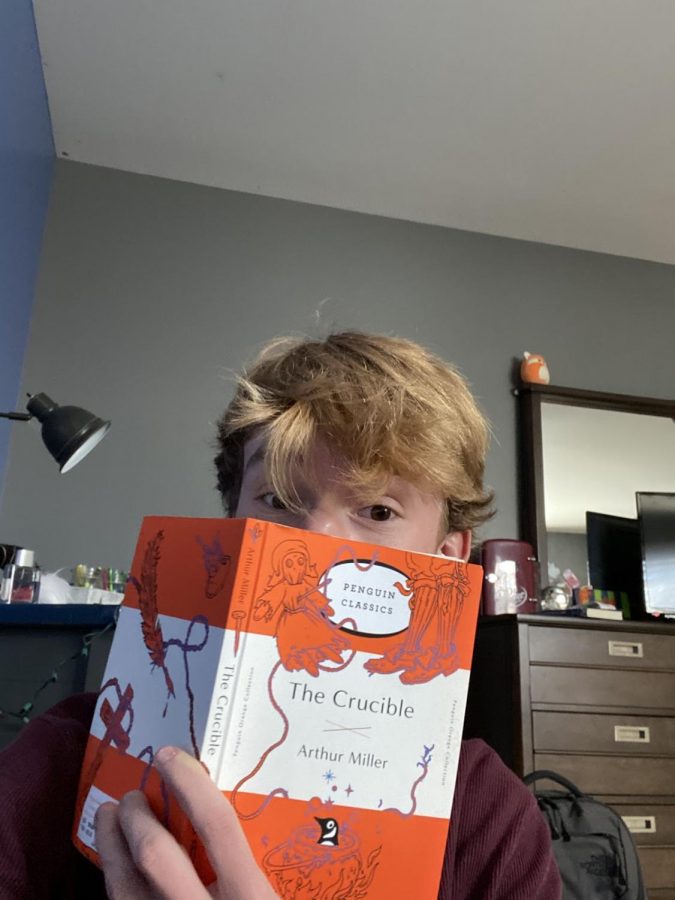The Crucible: A mix of witchcraft and classic literature
December 10, 2020
“He have his goodness now. God forbid I take it from him.”
“*sniffling sounds*”
Arthur Miller’s novel “The Crucible” is a classic piece of American literature and a staple in English classrooms around the country. The book, written in play format, is composed of three separate acts that combine to create a beautiful story of life, love, and sorrow.
With themes that discuss the very nature of hysteria and the repercussions of betraying your own morality, the crucible is the farthest thing from light-hearted. The central focus of the book serves as a warning to the swift nature of hysteria and how it can embed itself into a community and wreak havoc.
It also follows protagonist John Proctor as he fights with himself and the world around him to regain his righteousness in the eyes of himself and God.
As far as mandatory readings go, “The Crucible” is top-tier. Most of the time, high school English is dominated by dystopian novels that serve as propaganda against the federal government, i.e. Fahrenheit 451 or Anthem; with the crucible, you get a meaningful book with themes that can be applied to the present day, not far-fetched themes that scare the reader into thinking that the state of the nation is headed for its untimely demise.
The Crucible was written by MIller with intentions to be a play, but the book itself quickly rose to literary classic status. This does not mean that the crucible did not reach its intended audience, the broadway adapted version of the book won a tony in 1953.
In 1996, Nicholas Hytner partnered with Miller to put his award-winning book on the silver screen. Starring 6- time oscar-winning actor Daniel Day-Lewis and 2-time Oscar nominee Winona Ryder, “The Crucible” is an amazing adaptation of a literary classic.
There is a sort of stigma around books that are read in school, the mandatory nature around reading the material makes students resent the book.
If you come across anyone who does not like “The Crucible”, they most likely either read it in their high school English class or watched an embarrassing rendition of the play in their high school auditorium. Because of this, the crucible tends to receive an undeserved bad reputation among students in and out of high school.
I think that if students read the book outside of the classroom on their own time, they would really enjoy the beautiful, emotional piece of work that is “The Crucible.”




